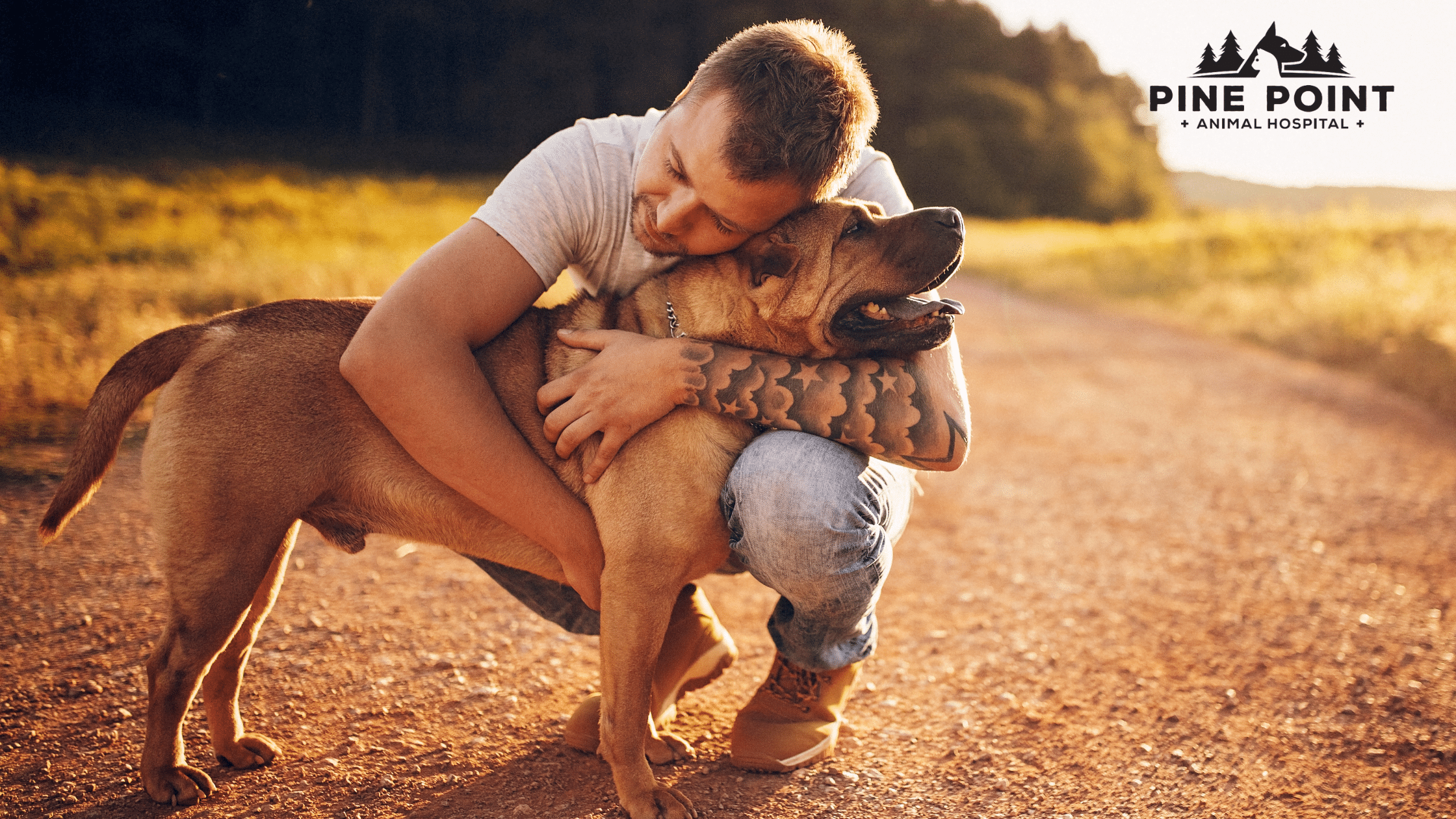November is Pet Cancer Awareness Month, a time set aside to raise awareness about pet cancer. Just like humans, dogs and cats can develop cancer at any stage of life, though it’s more common in senior animals. Luckily, with early detection and advances in treatment, pets today have a better chance of being successfully treated for cancer than they ever have before! In this blog, we’ll look at steps you can take to prevent, recognize, and treat pet cancer.
What Is Pet Cancer?
Cancer is a general term for a group of diseases that occur when cells grow and spread abnormally and/or uncontrollably. Since there are many distinct types of cells in the body, there are many different types of pet cancer. That’s why it’s especially important to know the common warning signs.
Pet Cancer Prevention
While not all types of cancer are preventable, some lifestyle choices can reduce cancer risk for pets.
Get regular labs and wellness exams. During your pet’s annual wellness exam, your veterinarian will perform a complete physical—from nose to tail—and check your pet for new growths, lumps, and bumps. We also recommend annual lab work. A complete blood count (CBC), serum chemistry panel, urinalysis, and thyroid hormone levels can help detect certain cancers early.
Avoid environmental toxins. Things like secondhand smoke, paint fumes, cleaning chemicals, and chlorinated pool water all contain carcinogens that can increase your pet’s risk of developing cancer.
Keep pets at a healthy weight. The National Cancer Institute estimates that pet obesity may account for 30% of cancer diagnoses in pets. Make sure your pets get plenty of exercise, monitor their treat intake, and be strict about the amount of food they get. How much food does your pet need in a day? Your veterinarian can help you calculate your pet’s metabolic needs during their next wellness visit!
Discuss the benefits of spaying and neutering your pets. On top of preventing unwanted litters and behaviors, spaying and neutering your pet may curb their risk of breast cancer and stamp out the chance of uterine, ovarian, and testicular cancer risk altogether.
Limit long-term sun exposure. Skin cancer makes up roughly one-fifth of all canine cancer diagnoses. Limiting your pet’s time in the sun or using protective sun gear can help. For hairless dogs or pets with thin fur, consider investing in a pet-friendly sunscreen. You can follow Batty for sun safety tips and tricks!
Pet Cancer Warning Signs & Symptoms
Many early signs of cancer are subtle. That’s why it’s incredibly important to know your pet and recognize changes to their unique activity level, appetite, and attitude. According to the Animal Cancer Foundation, the ten most common warning signs are:
- Swollen lymph nodes
- An enlarging or changing lump
- Abdominal swelling/distension
- Chronic weight loss
- Chronic vomiting/diarrhea
- Unexplained bleeding from the mouth, nose, genitals, or gums
- A dry, non-productive cough in an older pet
- Lameness, chronic stiffness, or other pain
- Straining to urinate
- Smelly breath or sudden inability to eat hard foods
If you notice any of these symptoms in your pet, don’t panic! A visit to your veterinarian can help you get to the bottom of the symptoms and either diagnose or rule out cancer as a cause.
Cancer Treatments for Pets
Pets today have a better chance of successful cancer treatment than ever before, especially with early detection. Available treatment options will depend on the type and stage of cancer. While some cancer cases can be managed with your general practice veterinarian, others may need a referral to a cancer care specialist. The three main types of cancer treatment are:
- Surgery: Widely considered the cornerstone for cancer treatment in animals, the main goal is to remove cancerous cells from the body. Surgery is most effective when cancer is detected early and has not had a chance to spread beyond its origin. Surgery may be used alongside radiation and/or chemotherapy.
- Radiation: This treatment is sometimes also called x-ray therapy, radioisotope irradiation, or cobalt therapy. It uses targeted radiation exposure to kill or damage cancer cells to prevent them from reproducing. Often, radiation therapy is used to either help make chemotherapy more effective or to decrease the size of a tumor to make surgical removal possible.
- Chemotherapy: This treatment uses medications to destroy cancer cells. These medications can be either given orally (as a pill or tablet), through an IV, or by injection. Most animals tolerate chemotherapy well with minimal side effects.
While the goal of any cancer treatment program is to completely and permanently eradicate the cancer, we also have to consider ways to minimize your pet’s pain and discomfort and enhance their quality of life. If your pet is undergoing cancer treatment, it’s important to notify your veterinarian if you notice changes to energy, appetite, or behavior.
Compassionate Cancer Care for All Pets
At Pine Point Animal Hospital, we understand that a cancer diagnosis can be scary! Luckily, you’re not alone. Our team is here to make sure you know your options and have the resources you need to do what’s best for your pet. As always, if you have any questions about your pet’s health and well-being, our team is just a phone call away!

